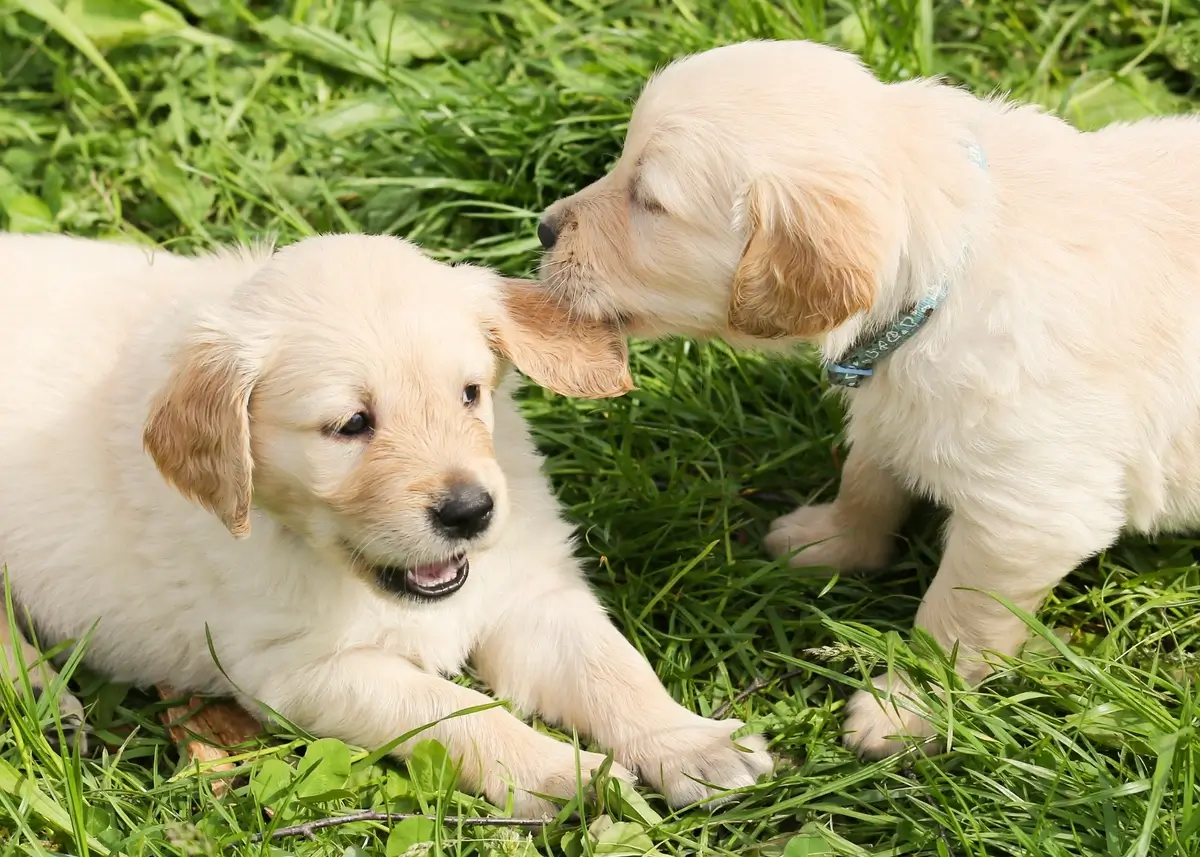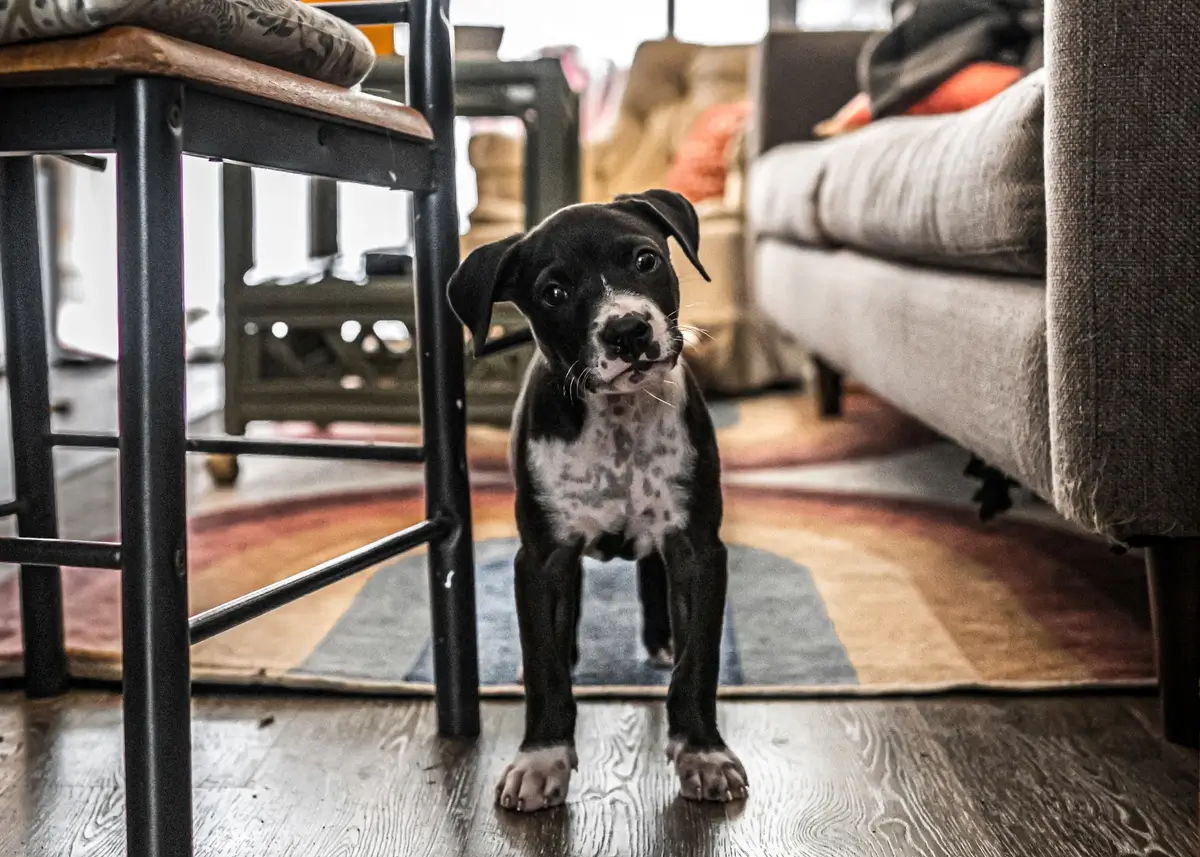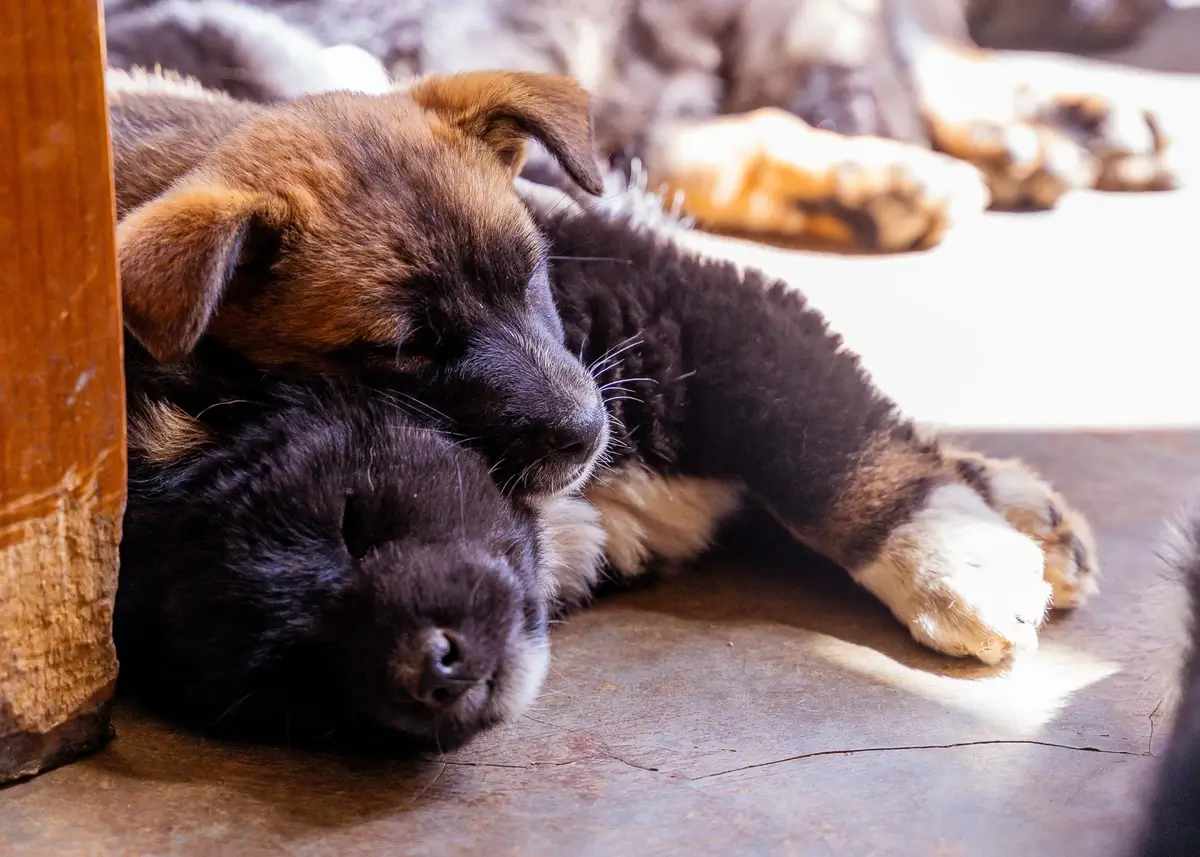You’re walking down the hallway minding your own business when a sharp pain shoots straight up from the bottom of your foot. “OUCH!” you holler as you investigate what could cause such pain.
You find a puppy tooth! That little precious stinker is growing up. If only the Puppy Tooth Fairy brought chew toys, frozen treats, furniture leg covers, bitter apple spray, and some choice beverages for you!
Puppies sure are cute, but those teeth can be razor-sharp! When you combine needle teeth with a puppy’s love of carrying objects from one place to the next added to the normal behavior of chewing, licking, and mouthing as a way of exploring the world, you’ve got yourself quite a recipe headed toward a puppy teething disaster.
However, don’t just grit your teeth and barrel through the puppy teething stages. If you know what to expect, you’ll be able to survive and thrive until your puppy reaches adulthood with all her permanent teeth.
Importance of Having Patience During Puppy Teething Stages
Before we learn about puppy teeth, we feel we must say the most important thing you can do during the puppy teething stage is to have patience!
We know how frustrating it can be when nothing seems to be going right, especially the moment you discover your precious puppy has absolutely destroyed your brand new Louis Vuitton x Nike Air Force 1 Gold shoes you forgot to put out of reach.
Your first inclination upon discovering the ruined tatters of your prized possessions can make you want to scream, yell, or throw things. You have to pull it together for your puppy’s sake. Never yell at your puppy, or worse, physically punish your puppy for a mistake they make during teething. All they saw was a tasty treat that may make their mouths feel better, not the fact that they just ruined one of the most expensive shoes in the world.
This stage won’t last forever. You are still learning about your puppy, and she’s still learning how to be a puppy, too. Hopefully, knowing what to expect during puppy teething stages can help you prepare to maximize fun and minimize damage.
All About Puppy Teeth
Puppies will begin to grow in their first set of teeth called primary, deciduous (because they fall out), or needle teeth (because of how sharp they are). Puppies have 28 deciduous teeth and will have 42 permanent adult teeth.
When a primary tooth grows in, the tooth is said to have erupted. Incisors come in first, followed by canine teeth (fangs), and then premolars. Permanent teeth also follow roughly the same order.
What Are the Stages of Puppy Teething?
This fact may fill you with shock and dismay, but the entire puppy teething process can last the first 2 weeks to 8 months of a puppy’s life. That may seem like a long time when you’re in the thick of it!
A puppy teething timeline is useful to know because your puppy has already started the process when she comes home to your loving arms. Just like humans, puppies are born without any erupted teeth. The poor nursing mama only experiences about 2-3 weeks of toothless nursing!
Puppies begin erupting teeth around 2-3 weeks old and will have all primary teeth in around 8-10 weeks old.
The primary teeth usually fall out in the order they erupted. Around 2-4 months, the incisors will fall out. The canines fall out around 4-5 months, and the premolars are the last to go around 5-6 months.
Permanent teeth can begin appearing at the same time the first primary tooth is lost. Around 8 months is when all 42 permanent teeth should be in:
- 12 incisors
- 4 canines
- 16 premolars
- 10 molars
What Do the Symptoms of Puppy Teething Look Like?
Wouldn’t it be nice if your puppy could talk to you? “Hey, mama! Look! I lost my first puppy tooth!” Then you’d celebrate the next morning to see what the doggy tooth fairy happened to leave.
Instead, what’s left are some razor-sharp teeth lying around that can rival the pain of stepping on a Lego.
A lost tooth on the floor may be the first sign you see that your new puppy is starting to shed primary teeth. Here are some other signs you can observe in your puppy when they start teething:
- Drool everywhere
- A bit of blood in their mouth or on a toy
- Swollen, tender gums
- Whining or whimpering
- Loose stools
- Bad breath
- Restless
- Behavioral changes
- Increase in chewing
How Can I Soothe My Puppy’s Teething Pain?
Puppies want to chew everything they can find to soothe their gums. Here are some ways to help your puppy cope with teething pain.
Frozen soothers
Frozen options to provide cool relief go beyond a frozen pup cup. These things freeze well for your teething puppy to chomp on:
- Carrots
- Bananas
- Strawberries
- Apple Slices (NO seeds!)
- Rolled-up wet washcloth
- DIY Fruit Ice Cubes
- DIY Yogurt Pupsicles
Puppy teething toys
A fantastic way to focus your puppy’s need to chew with a soothing effect is a win all around. Select durable puppy teething chew toys designed to withstand sharp teeth and provide comfort.
You’ll find all sorts of designs and materials in puppy teething toys. Some are meant to go in the freezer, are edible, or are flavored to encourage a puppy to maintain delicious interest. Others are made to be flexible enough but tough enough to withstand sharp teeth and powerful jaws. A good chew toy will be durable, engaging, and soothing to your teething puppy.
Check the condition of the toys for broken parts. Rotate them out to keep your puppy excited and entertained. And even though a chew toy is meant to hopefully occupy a puppy’s attention, you should always supervise chew toy time.
Preparing Your Home For a Teething Puppy
If you haven’t taken the time to fully prepare your home for a new puppy, the teething stage will definitely kick the effort into high gear! Know what you can do to prepare your home (and your sanity) for a teething puppy’s urge to chew everything in sight.
Spaces to Protect
Assess your home from your puppy's perspective. In a previous blog, we’ve encouraged new puppy owners to literally lie down and sit on the floor to see what exactly your puppy sees. Don’t forget to look under the furniture as well!
You have to think like a puppy. “If I were a puppy, I could chew on and destroy…”
- Electronic cords and outlets
- Baseboards
- Wall corners
- Rug tassels and edges
- Furniture legs
- Staircases (risers, tread, handrails, balusters)
- Curtain cords or drapery
- Upholstery
- Potted Plants
- Entryways (umbrellas, coats, shoes, etc.)
- Coffee table contents (including the remote controls)
- Trash can contents
- Piles of paper, “doompiles” of clutter
- Items kept in low baskets or shelves
- Decorative blankets, throws, and pillows
- Closet or pantry floors
- Dirty clothes in the laundry room
- Cabinet contents (store all cleaners far up)
Products to Try
Once you’ve taken a detailed inventory of your space, you can now use a variety of products to be proactive to minimize any potential damage from puppy teething.
You can purchase all sorts of covers meant to protect chewing puppies from your furniture corners, legs, surfaces, baseboards, stair parts, and wall edges and corners.
Another great set of products on the market to help protect your things are specialized puppy-safe, anti-chewing spray products designed to deter teething by making items taste bad.
Help! Does Puppy Teething Cause Bad Behavior?
One main way a puppy learns about her environment is by using her mouth to explore. Dogs learn information through how things feel. If you combine a puppy naturally curious about her world with teething, you have a mouthy, rambunctious 4-legged terror ready to chew anything in sight! You may also notice your puppy nipping and biting at you. It might have been cute at one time, but the holes starting to form in your clothes are not as cute!
While teething doesn’t cause a puppy to become inherently aggressive or act out of malice, you may not appreciate the new behaviors you notice during the puppy teething.
Since you should have your puppy in some sort of training experience once they’re old enough to be current on vaccinations to go out and about, you can naturally work on techniques to help quell unwanted biting, nipping, chewing, and other behaviors.
Training techniques
If your puppy bites, nips, or chews on you, she needs to know clearly the behavior is NOT wanted. You can give out a high-pitched yelp, pull your hand away, and end the activity.
Teach your puppy “leave it,” “drop it,” or “give.” Each of these commands lets you take control of the object before your puppy thinks it’s for her!
Use high-value treats and toys to distract your puppy from heading toward those tasty baseboards. Work on commands like “come” and “sit” to keep her focus.
Redirect your puppy and give lots of praise to reinforce wanted behaviors.
Dental Care For a Teething Puppy
Keeping up with your puppy’s dental hygiene is crucial to overall health. Problems left untreated, such as plaque buildup and gingivitis, can turn into serious medical events that adversely affect organs.
While it is important to brush your dog’s teeth, you can wait for that until they grow in all their teeth. Until then, it’s a great idea to get your puppy used to having a finger in their mouth, and touching their lips and gums to get used to future teeth brushing sessions or vet exams. By introducing a taste of dog toothpaste and the fundamentals of teeth brushing, your puppy will be used to it by the time you use adult dog toothpaste.
Several teething toys also serve as dental chews, which keep teeth clean and freshen their puppy breath.
When Should I Call the Vet For Puppy Teething?
It’s rare you will experience a true emergency during puppy teething. Most puppies may experience some discomfort, but most effects from puppy teething are completely normal and is usually not a cause for concern.
Some common events that may concern first-time puppy owners are noticing a bit of blood from a tooth eruption site or wondering if it’s okay for a puppy to swallow loose teeth. Your puppy is fine in both of these situations.
However, you should be aware of some dental problems in puppies so you can bring them up with your vet if you notice something not quite right with teeth growth.
Retained deciduous teeth happen when puppies, especially small breeds, do not lose the teeth they are supposed to, which can cause malocclusion or periodontal disease. Malocclusion, or the misalignment of permanent teeth, is a result of retained deciduous teeth and can cause poor bite and discomfort. Periodontal disease is caused when food can get trapped between the retained deciduous teeth, the permanent teeth, and the gingiva (gums).
A vet can provide a quick exam to see if there are any retained deciduous teeth and may wait to take out any retained deciduous teeth when your puppy gets spayed or neutered to take care of the procedures at the same time.
Pawrade is Chomping at the Bit to Find You a Puppy For Sale
There is nothing we love more than a cute puppy. If you ask yourself if you are ready for a puppy and you say the answer is yes, then you know that teething is a necessary, painful, and uncomfortable stage for everyone.
Pawrade takes the painful, uncomfortable experience of finding a trustworthy breeder on your own by matching responsible breeders with people like you looking at puppies for sale. Contact us today to get started.
*Paid partnership with our friends at Chewy






